#which is cacao (cocoa?) powder
Explore tagged Tumblr posts
Text

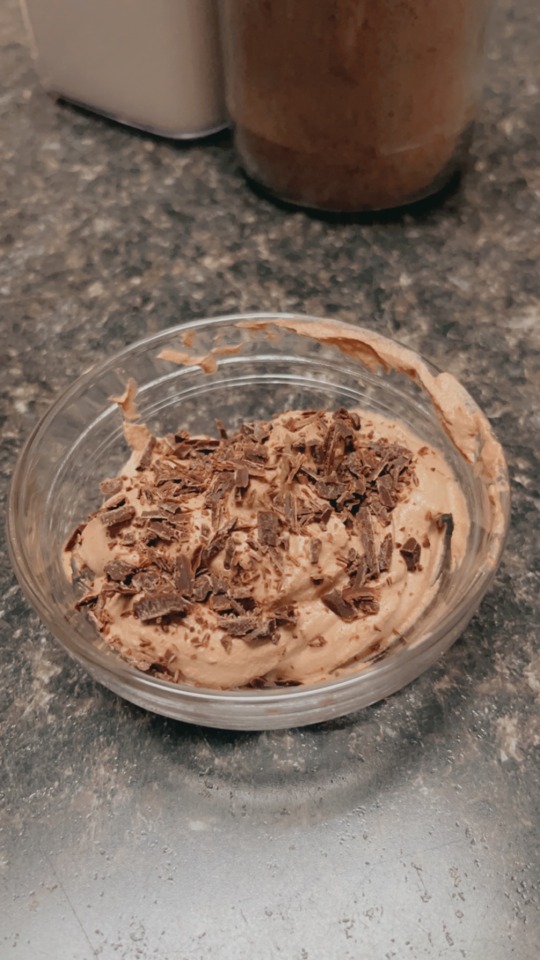
i made the 3 ingredient chocolate mousse....
#roguish archetype.txt#in a fervor i had to. i realized i had the ingredients#then i added some dark chocolate shavings#i keep 76% cacao dark chocolate around for granola & yogurt & fruit bowls so#it's good!! mine is very subtle and i like it that way#i suspect the subtle taste depends on your cocoa powder though tbh#ours is very light which is my preference. i don't like rich chocolate much
4 notes
·
View notes
Text

yea i definitely felt like i was being mised into the fucking abyme youre telling me
#and it did taste like hot chocolate bc thats what i was drinking#incomprehESNIBLE post ✌️#why do i write post like im making rebuses#this is on the wikipedia page of melmoth the wanderer#mise en abyme is like whats also called the droste effect#which is cacao (cocoa?) powder#got distracted meant to look up poisons
3 notes
·
View notes
Note
What are the cookie run “fams” and what do the Y/Ns look like?
Yandere CRK Families
Alright this was a fun question, so I’ll go over three of them!

Chocofam
In terms of personality, I think that this particular Y/N is going to be very timid and withdrawn after an entire life spent within their father’s desolate and quiet castle.
As someone who believes in the necessity of strength and discipline, Dark Cacao Cookie doesn’t hold back from piling on consequences when he thinks you’re making a mistake or putting yourself in danger. His guidance is often harsh, but he genuinely thinks it’s what you need to become resilient enough to survive.
The king is strict- but he’s convinced that it’s only because he wants to see you become the best version of yourself. He frequently gives you strenuous “lessons” in survival skills or fighting techniques, preparing you for any misfortune or struggle that may come your way, but deep down, Dark Cacao knows he’s not willing to cut your lead enough slack to allow to those scenarios to manifest.
…and maybe it allows him to tuck your tired room in nice and tight when all is said and done, and maybe leave you with a treat or two.
But only if you’re good.
Caramel Arrow Cookie guards you as she guards the king, willing to trade her life for yours- I think she manifests her “yandere” behavior in sheer devotion and loyalty to His Highness, Dark Cacao Cookie, which spills over onto you in turn. If you are safe and happy, then Caramel Arrow knows that her king can focus on his duties as sovereign.
Because she’s unwilling to go against an order levied by the king, Caramel Arrow is strikingly strict with her care- not brutally so, but she’s definitely not the sort to waver once an order has been given. To help pass the time, she’ll set up targets and guide you through nocking and loosing arrows, ensuring that you’ll be just as grand an archer as her, all in time with your father’s ceaseless swordsmanship lessons. She’s warm-hearted in spite of her unwavering devotion to your safeguarding, which means it’s not impossible to get a pep talk or even a piggyback ride back to your room when you grow exhausted- and she also makes all of your meals herself to prevent any poison from being snuck in.
As for Crunchy Chip Cookie, he’s a little more hands on when it comes to dealing with you. He’ll roughhouse and tease and pester, though always with a measure of restraint- his job is to keep you safe, so no going all out or actually fighting. Still, a wrestling match or two is good for your spirit and allows for the burning of excess energy.
Though you aren’t allowed outside, there’s no rules against bringing outside in… which means that the Cream Wolf pups can “secretly” visit you as much as they’d like! It’s an immediate mood-booster for both you and the puppies, so he doesn’t mind cutting into training time.
Dark Cacao knows about all these canine rendezvous, of course. Crunchy Chip ran it by him beforehand, but they pretend that all of it is happening just under the rug. Maybe a little bit of presumed “troublemaking” does your heart good.
Well, until you inevitably get attached to a ring and then shuffle into his throne room to guiltily ask to keep it as a pet after “confessing” to playing with them it frequently.
(…he says yes, to everyone’s surprise.)

Probably your name is something like “Chocolate Milk Cookie”, “Cocoa Powder Cookie”, or “Dark Truffle Cookie”.
(Though the many soldiers tasked with caring for you will inevitably slip in enough nicknames to fill a book…)
Constantly nervous/bored and frowning, the soft gifts you’re spoiled with can only do so much to keep your wanderlust and frustration at bay- not that Caramel Arrow and Crunchy Chip ever stop piling them on. You prefer the books over the plushes, but anything new gets your little sad face twisting into a gleeful expression, encouraging your guardians to continue piling the gifts on.
Dark Cacao has you permanently bundled into the traditional garbs of his people, constantly wearing a reminder of the long-buried soldiers who bravely gave their lives for their people.
Unfortunately for you, you aren’t granted the privilege of owning thick woolen socks or fuzzy fur-lined boots- instead, your father ensures that even a step out of line would have you freezing and desperate to return to the warmth of your room.
Instead, you are forced to remain barefoot all through the day, walking only in halls and rooms that have plush carpet laid out for your little feet- else you begin to crumble from the cold. Of course, if the weather ever gets to you, you can always return to your room and request a fluffy blanket or a hot meal…
So long as you do what father says.

Oceanfam/Gemfam
(Not sure which one yet… name pending, basically. “Mermaidfam” is a little long, haha)
Probably you’re a little thing who falls overboard after rowing out a little too far, caught in the careless waves and dragged under the tide, then beaten mercilessly against rough rocks and jagged coral. The event leaves you soggy, close to crumbling… until a tender mermaid comes to your rescue under the veil of moonlight, dragging you to her underwater palace.
White Pearl Cookie is happy to meet you, to know you, to drink in every last story you can share with her about your warm and dry home back on land- until you pass out in her arms, dough so broken that your jam spills into the waters of Tearcrown.
Luckily for you, the Little Moon of the Sea has no end to her patience and kindness! Given that you’re unarmed and somewhat crippled at the moment, there’s little harm in bringing you back to the palace and settling you in for an extended stay.
Her sisters, on the other hand…
Though she’s kind, Aquamarine Cookie doesn’t think much of you at first. Really, with your wobbly lips and tearful eyes that scrunch each time a wound is cleaned and patched, she mostly just pities you. Eventually you end up wandering into her garden, where she warms up to your curiosity and enthusiasm over her lovely array of foliage. Especially if you take notes as she speaks. Expect lots of veggie dishes to aid in your healing.
Though she finds most two-legged cookies to be far too odd to bother with, Gold Citrine Cookie has already raided your personal effects and taken a liking in your interests- after all, a cookie that loves the sea can’t be that bad, right? She snatches the prettiest shells from your bag and takes them to her reliquary, hoping to gild them until they’ve reached a level of sparkle that satisfies even her.
Maybe some two-legged cookies are worth getting to know, if you like the same things that she likes. If you make White Pearl happy, you can’t be too bad.
Given her powers of foresight, Mystic Opal Cookie has very little trouble finding where you’ll be or what you might want, often drifting into sight to offer up a warm shroud or a nutritious snack, then slinking back into the shadows without a further word. She won’t never indulge to you her visions, but it’s safe to assume that you’re at least in them.
Crimson Coral Cookie doesn’t exactly like having a dubious and dying land cookie in their ward, but like her other sisters, understands that you basically can’t do anything to harm them without ensuring a death sentence for yourself, and you’re clearly not stupid, so… she allows your presence to slide.
Once she sees how happy you make her littlest sister, Crimson Coral does genuinely lighten up and make a decent effort to understand you, especially if you have knowledge of aquatic animals- it’s an easy thing to bond over.

I’m guessing that this particular Y/N might be something like “Shoal Scavenger Cookie”, “Seaweed Sailor Cookie”, or maybe “Tide Tracker Cookie”- having ties to the sea certainly helps them earn the trust of the Gem Mermaids by proving that you aren’t too different in terms of what you and they cherish.
With components like seafoam or algae in your dough, you’re surprisingly resist to growing soggy in the water, even more so when you’re granted a jewel to ward off the condition entirely- albeit in the form of a bracelet or necklace that locks tight around your dough and can’t be removed by hand.
Gold Citrine enjoys dressing you in a dazzling array of glittery and luxurious clothing, often custom-tailoring flowing garbs that sway with each gentle wave that billows through Tearcrown… though she often forgets that you don’t have a tail.
(…not that they aren’t looking for a way to give you one.)

Darkfam
Y/N is a Cake Hound Cookie. There’s no way around it. Red Velvet Cookie finds your little form after it toddles out of the oven, delirious from heat and fear, shivering and quaking- and he fucking snaps.
You’re him.
A mixture of Cookie and Cake, beast and being, in a neat package with a tail that nervously wags as he brings food to your mouth, his clawed hand cupped around the back of your little head, feeling your squishy strawberry ears…
You are a seamless culmination that he can only dream of being.
In reverence and awe, he brings you back to his master’s lair.
For all that Licorice Cookie isn’t on board with having a freshly baked cookie on the team (especially with how much trouble Poison Mushroom Cookie causes him), he’s also aware that letting a child who is immediately and unmistaken visible as “half-monster” wander freely in the world would be worse, and the mage doesn’t have it in his heart to send you off after you’ve already settled in.
As for the shroom-fanatic themself, Poison Mushroom Cookie essentially just clings to you and offers an endless supply of “shroomies” with abated glee, constantly hanging from your sleeves and tugging on your tail as you go about the day, just happy to have a new friend after a certain swordsman left…
Pomegranate Cookie graciously agrees that Red Velvet should keep you alongside his other Cake Hounds, if only because she’s intrigued to see what you’ll be capable of doing. After all, another set of hands to aid their master isn’t exactly a bad thing- and you very well may have powers granted to you by nature of your birth as a cookie-cake amalgamation. In time, she comes to treat you as she treats Poison Mushroom- almost as a troublesome little sibling who needs watching over.
Never one to spurn decent company, Schwarzwälder is happy to have a cookie young enough to do as he says- you’re probably too young to grasp his born name, and settle for calling him “Brute”. I imagine he’s got some decent ground rules for being a canine, knowing what you can or can’t eat, what methods for tending to your ears and tails is best, etc, etc… probably the safest yandere we’ve gone over so far.

Perpetually confused at the new and strange world around you, your eyes are frequently wide and your face pulled into a contemplative frown, overwhelmed with all that your sensitive ears and nose pick up on.
Red Velvet wants to be the one who does your hair, but his cake hand makes it nearly impossible to complete without damaging your frosted strands, so Pomegranate or Licorice will do it instead. Poison Mushroom will, uh, “try”… but their version of “trying” is to braid little mushrooms into the frosting.
(A+ for effort, Poison Mushroom Cookie.)
However, Red Velvet does get to help keep your ears glossy and tail clean, spending hours each week tending to your canine appendages. He’s got specialized polish (by Schwarzwälder’s recommendation) for the strawberry ears that flick and swivel with each barked order and every little coo, and a brush for the cream dollop tail that waggles at Bat-Cat and Schwarzwälder’s antics.
All your clothes are custom-sewn, of course. Red Velvet simply won’t tolerate any less than the about best for his favorite little soldier.
Once Pomegranate has grown fond of you, she’ll take to stitching any tears or fraying in your clothes, mending them with a sleek red and black thread that resembles her beloved master’s color scheme.
(Schwarzwälder is probably your favorite, though- after all, he’s the only other dog!)
#Platonic Yandere#Yandere Cookie Run Kingdom#Yandere CRK#Yandere Dark Cacao Cookie#Yandere Caramel Arrow Cookie#Yandere Crunchy Chip Cookie#Yandere White Pearl Cookie#Yandere Crimson Coral Cookie#Yandere Gold Citrine Cookie#Yandere Aquamarine Cookie#Yandere Mystic Opal Cookie#Yandere Red Velvet Cookie#Yandere Licorice Cookie#Yandere Pomegranate Cookie#Yandere Poison Mushroom Cookie#Yandere Schwarzwälder#Chocofam#Gemfam#Darkfam
415 notes
·
View notes
Text
Writing Notes: Types of Chocolate

Chocolate - comes from the beans of the cacao tree (Theobroma cacao).
These cacao beans (or cocoa beans) come packed full of flavor, antioxidants, and other compounds.
To turn these beans into the sorts of chocolate products you see in stores, people process the cocoa butter and chocolate liquor found inside them alongside other ingredients (like sugar, milk fat, and lecithin).
Types of Chocolate
There are many different varieties of chocolate, and each of them has its uses in different recipes. Here are just 8 you might want to consider trying out for yourself:
Couverture chocolate: This coating chocolate melts easily, making it a suitable choice for tempering confections, such as truffles or chocolate-covered fruits. Couverture chocolate mixes contain high amounts of cocoa butter, which expedites the melting process and makes this variation smooth in general.
Dark chocolate: With its bitter taste and touch of acidity, dark chocolate possesses a far more authentic chocolate flavor than some of its more sugary counterparts. Dark chocolate bars, candies, and mousses maintain the natural balance of chocolate liquor and cocoa butter found in cacao beans—sometimes with a little sugar and vanilla for a smidgen of sweetness.
Milk chocolate: Some of the most famous and popular chocolate bars in the world come from milk chocolate. While these candies still include plenty of natural cocoa content, those who make them also add milk solids, various emulsifiers, and sugars to give them a very smooth texture and sweet taste.
Natural cocoa powder: Sometimes, it’s best to use ground-up cacao nibs as a natural baking powder. You can also purchase alkalized cocoa powder to cut down on the natural acidic flavor without compromising the other organic ingredients. This way, you can bake a chocolate cake or another type of treat without any additives in the chocolate itself. As such, you can add as much sugar, milk, or other ingredients as you see fit, rather than relying on a premade mixture.
Ruby chocolate: Belgian chocolate maker Barry Callebaut pioneered ruby chocolate, which has a rich chocolate flavor with berry notes. This product combines ruby cocoa beans (which have a reddish hue and a distinctly fruity and sour flavor) from Brazil and Ecuador with milk and sugar to create a taste that’s both unique and familiar all at once.
Semisweet chocolate: Common in brownies and other floury treats, semisweet chocolate usually contains around half cocoa butter and half chocolate liquor. Technically, FDA standards dictate that semisweet chocolate needs only around thirty-five percent of its mixture to be chocolate liquor to qualify as such. The same goes for bittersweet chocolate.
Unsweetened chocolate: Next time you’re baking chocolate chip cookies, try unsweetened chocolate from pure chocolate liquor. You can always add additional sweeteners to these cocoa products if you feel they don’t have enough sugar to satisfy your sweet tooth. If you appreciate natural cocoa powder, unsweetened chocolate is practically the same.
White chocolate: To make white chocolate, you must strip out nearly all the cocoa solids and chocolate liquor in cacao beans, leaving just the cocoa butter. Although it might not feature the trademark brown color or traditional chocolate taste of other forms of chocolate, white chocolate is still part of the broader cacao family. It often includes plenty of milk, added sugar, and vegetable fats to give it a smooth, sweet, almost vanilla flavor.
How One Type of Chocolate Differs From Another
Chocolate makers distinguish one type from another by altering the natural ingredients in cocoa beans or adding additional ingredients into the mix.
These ingredient ratios make different chocolates distinct from each other.
For example, a compound chocolate might feature palm oil rather than natural cocoa butter.
Similarly, some types of chocolate feature less sugar than others. The US Food and Drug Administration (FDA) also issues requirements for the percentage of cocoa and other ingredients necessary for labeling each kind of chocolate accurately.
Source ⚜ More: References ⚜ Writing Resources PDFs
#chocolate#writing reference#food#writeblr#worldbuilding#writers on tumblr#dark academia#literature#spilled ink#writing prompt#creative writing#light academia#writing ideas#writing inspiration#writing resources
74 notes
·
View notes
Text
Superfoods you should incorporate in your diet:
Superfoods are nutrient-dense foods that are considered beneficial for your health due to their high concentration of vitamins, minerals, antioxidants, and other beneficial compounds.
Combine these superfoods with a variety of other whole foods to ensure you're getting a wide range of nutrients. Also, be mindful of portion sizes and any individual dietary restrictions or allergies you may have.
Berries: Blueberries, strawberries, raspberries, and other berries are rich in antioxidants, fiber, and vitamins.
Leafy greens: Spinach, kale, Swiss chard, and other leafy greens are packed with vitamins, minerals, and fiber. They are low in calories and provide important nutrients like vitamin K, vitamin C, and folate.
Cruciferous vegetables: Broccoli, cauliflower, Brussels sprouts, and cabbage are part of the cruciferous vegetable family. They contain compounds that may help reduce the risk of certain cancers.
Nuts and seeds: Almonds, walnuts, chia seeds, flaxseeds, and hemp seeds are excellent sources of healthy fats, protein, fiber, and various vitamins and minerals.
Fish: Fatty fish like salmon, sardines, and mackerel are rich in omega-3 fatty acids, which are beneficial for heart health and brain function.
Whole grains: Quinoa, brown rice, oats, and whole wheat are examples of whole grains that provide fiber, vitamins, and minerals.
Legumes: Beans, lentils, chickpeas, and other legumes are high in fiber, protein, and various nutrients. They are also a good source of plant-based protein.
Turmeric: This spice contains curcumin, a compound with potent anti-inflammatory and antioxidant properties.
Green tea: Green tea is rich in antioxidants called catechins and is believed to have various health benefits, including improved brain function and a lower risk of certain diseases.
Dark chocolate: Dark chocolate with a high cocoa content (70% or higher) is a source of antioxidants and may have positive effects on heart health and mood.
Avocado: Avocados are rich in healthy fats, fiber, and various vitamins and minerals. They also provide a good source of potassium.
Greek yogurt: Greek yogurt is a protein-rich food that also contains beneficial probiotics, calcium, and vitamin B12.
Sweet potatoes: Sweet potatoes are packed with vitamins, minerals, and fiber. They are an excellent source of beta-carotene, which is converted into vitamin A in the body.
Garlic: Garlic contains sulfur compounds that have been associated with potential health benefits, including immune support and cardiovascular health.
Ginger: Ginger has anti-inflammatory properties and is commonly used to aid digestion and relieve nausea.
Seaweed: Seaweed, such as nori, kelp, and spirulina, is a rich source of minerals like iodine, as well as antioxidants and omega-3 fatty acids.
Pomegranate: Pomegranates are packed with antioxidants and are believed to have anti-inflammatory properties. They are also a good source of vitamin C and fiber.
Cacao: Raw cacao is the purest form of chocolate and is rich in antioxidants, flavonoids, and minerals. It can be enjoyed as nibs, powder, or in dark chocolate form.
Quinoa: Quinoa is a gluten-free grain that provides a complete source of protein, along with fiber, vitamins, and minerals.
Extra virgin olive oil: Olive oil is a healthy fat option, particularly extra virgin olive oil, which is high in monounsaturated fats and antioxidants.
Chia seeds: Chia seeds are a great source of fiber, omega-3 fatty acids, and antioxidants. They can be added to smoothies, yogurt, or used as an egg substitute in recipes.
Beets: Beets are rich in antioxidants and are known for their vibrant color. They also contain nitrates, which have been shown to have beneficial effects on blood pressure and exercise performance.
Matcha: Matcha is a powdered form of green tea and is known for its high concentration of antioxidants. It provides a calm energy boost and can be enjoyed as a tea or added to smoothies and baked goods.
Algae: Algae, such as spirulina and chlorella, are nutrient-dense foods that are rich in protein, vitamins, minerals, and antioxidants. They are often consumed in powdered or supplement form.
Fermented foods: Fermented foods like sauerkraut, kimchi, kefir, and kombucha are rich in beneficial probiotics that support gut health and digestion.
Maca: Maca is a root vegetable native to the Andes and is often consumed in powdered form. It is known for its potential hormone-balancing properties and is commonly used as an adaptogen.
Goji berries: Goji berries are small red berries that are rich in antioxidants, vitamins, and minerals. They can be enjoyed as a snack or added to smoothies and oatmeal.
Hemp seeds: Hemp seeds are a great source of plant-based protein, healthy fats, and minerals like magnesium and iron. They can be sprinkled on salads, yogurt, or blended into smoothies.
Moringa: Moringa is a nutrient-dense plant that is rich in vitamins, minerals, and antioxidants. It is often consumed as a powder or used in tea.
Mushrooms: Certain mushrooms, such as shiitake, reishi, and maitake, have immune-boosting properties and are rich in antioxidants. They can be cooked and added to various dishes.
#health tips#healthy lifestyle#health and wellness#nutrients#healthy life tips#healthy life hacks#healthy diet#level up journey#high value mindset#health is wealth#levelupjourney#glow up tips#glow up#nutrition#healthy living
2K notes
·
View notes
Text
Gonna do a thing where I show a cookie's ingredients and also an explanation on how they reproduce is in here
The witches have entrusted me with information on cookies, each cookie's ingredients, whether they're made by the witches or not, etc, etc. Boring stuff you probably don't care about. Let's just say I have too much time and too many old books in my archives (no relation to the City of Wizards. Mine are WITCHES archives).
But, I have the recipe for each Cookie on Earthbread, which shows how some of these cookies are made. Here's an example with Clover Cookie's ingredients!
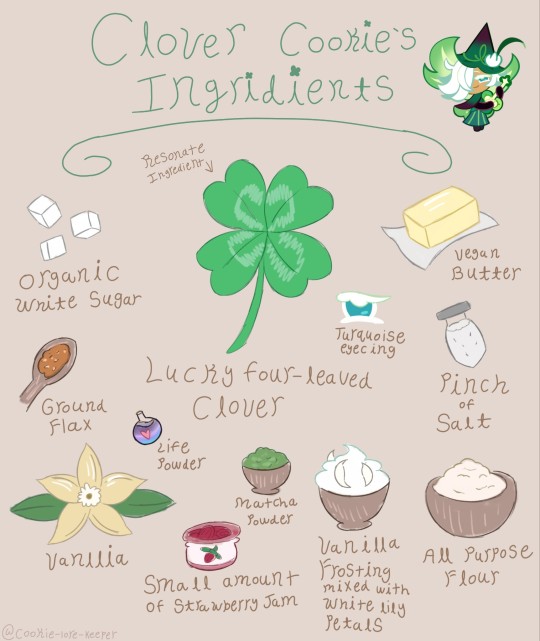
Next
We don't include the ingredients such as personality traits, talent, etc, since those are always fluctuating, and those are ingredients gathered through life. So, while Strawberry Crepe Cookie is right when they mention Clotted Cream Cookie's 2% connivingness, we tend not to include such things.
Strawberry jam, life powder, and flour are always present. Sometimes, we can use sugar substitutes, but not often.
Anyways, explaining how ingredients work.
Cookies made by other cookies and not by the witches have a unique way of producing other cookies. Cookies who want to have a child will use parts of their own dough (little parts so that it heals. Don't crumble your arm off!). Since this dough already contains life powder, strawberry jam and all the other vital things, the cookies don't need to go and seek it out (like many humans believe). Cookies will use various means to get the dough soggy again and good for baking. They will then search for other ingredients to add to the dough.
It's important to note that the offspring will always have some of the parents' ingredients. While many assume Tiger Lily Cookie has no juice in her dough, her dough actually contains both juice and berries! Her Resonate Ingredient, a Tiger Lily, is just more prominent.
A Resonate Ingredient can be both added or might even just be there before extra ingredients are added. Dark Cacao Cookie, as an example. His resonate Ingredient is a Dark Cacao Bean, but his son, Dark Choco Cookie's, resonate Ingredient is a Dark Cocoa Bean, because the process of baking him roasted and processed the bean(s) in his dough. Even though Dark Cacao Cookie most likely bred asexually and didn't tamper with the dough much, the Resonate ingredient was still different (even if still a bit similar).
Parents can shape the flavor and scent of their young by their ingredients. A child won't always have the same flavor or scent as it's parents.
Once complete, the dough is put into a special oven built for them (usually found in hospitals and such), where the fresh dough can safely be baked. The process allows all the mixed material to form, including the life powder, which gives the baby Cookie life. Then, out comes a baby dough.
Even out of the oven, the dough is still a bit soft. Don't worry though. It'll harden with time. It's important for freshly baked dough to get a lot of sunlight so their dough remains crunchy and healthy.
Cookies can breed asexually and even have more than 2 parents because of this procedure. If two or more cookies want to have a child together, they each take parts of their dough off and mix it together.
This was all used just so I could show Clover Cookie's ingredients, but I got too excited to explain Cookie Reproduction... But, if you want to see more pages from my ingredients book, just ask me!
#//idk shit about baking btw#//I looked up “Vegan matcha sugar cookie recipes” and clicked on the first thing i saw (i assumed Clover Cookie had vegan ingredients)#//so if there's an issue it's bcuz im stoopid#//also i headcanon that he's the kid of Pure Vanilla Cookie and White Lily Cookie which is why he shares similar ingredients lol#clover cookie#cookie run headcanon#cookie run headcanons#cookie run theory#crk theory#cookie run kingdom#crk#cookie run ovenbreak#crob#crtoa#cookie run tower of adventures#crwc#cookie run witch’s castle#cookie run#cookie run lore#art#digital art#digital artwork#headcanon#artists on tumblr#half moon cookie talks#digital illustration#illustration#digital drawing#cookie ingredients#cookie archives
114 notes
·
View notes
Text
the most common candy flavors in sornieth are herbal and tea-based. tea flowers and petals, insects, and small bits of dried foraged local fruit are common additives suspended in hard candies as well. occasionally even jerky, though most would prefer just have a very sweet piece of honeyed jerky instead.
cane sugar as a sweetener is extremely rare outside of sugarcane's limited native range. instead, most sornieth cooking uses the natural sugars in fruit, honey, even things like beets.
outside of the native range of the cacao tree, the only of it's products that most ever see is an extremely dark cocoa powder, itself pricey and rare, which is more often than not used as a spice and to make several forms of bitter, spiced drinks. while locals in the native growing range of the tree have some more recipes involving the fresh flesh, membrane, rind, and whatnot of the fruit, chocolate, as we understand it, more or less doesn't exist.
meat shaved ice is a thing. you freeze a piece of raw meat. maybe soak it in strong sauces first. and you shave it like ice. it's disgusting if you're not an obligate hypercarnivore. if sornieth has any equivalent to icecream their idea of common flavors is probably quite a bit different from ours.
13 notes
·
View notes
Text
In case you reblog, add in the comments what your fave is!
4 notes
·
View notes
Text
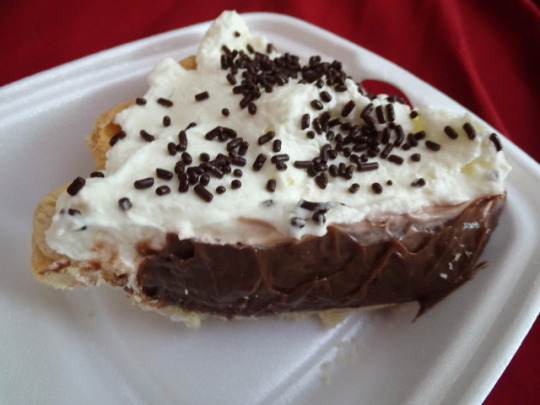
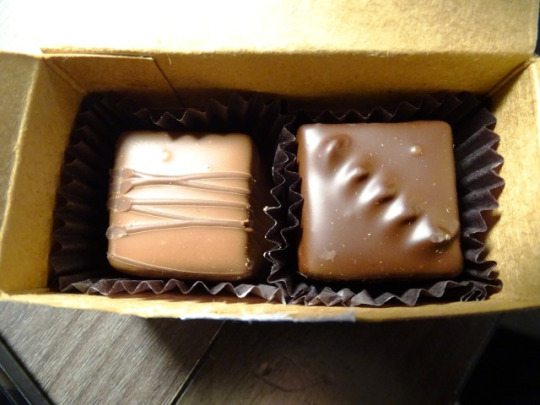
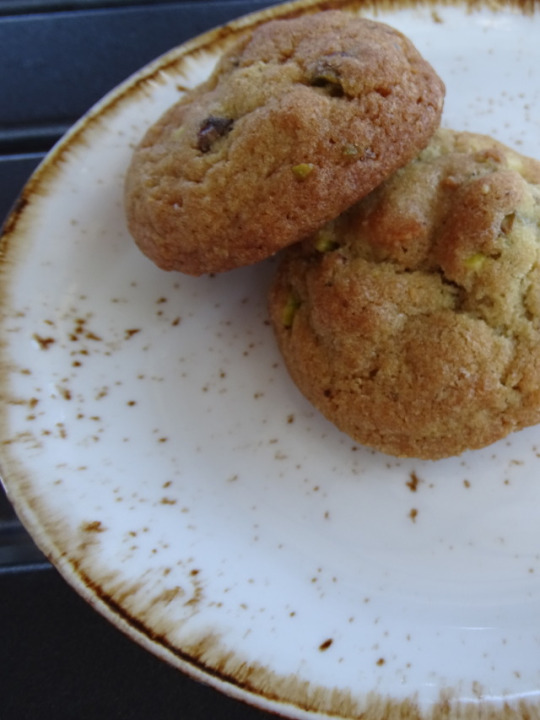



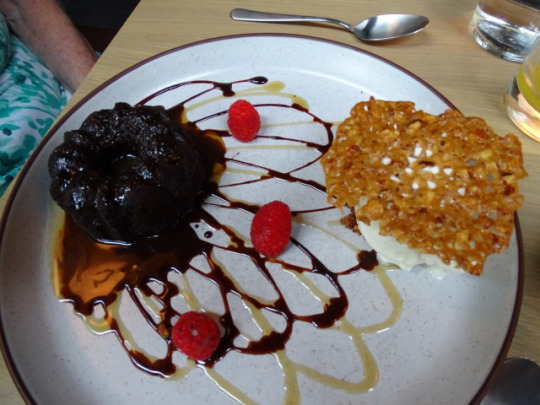








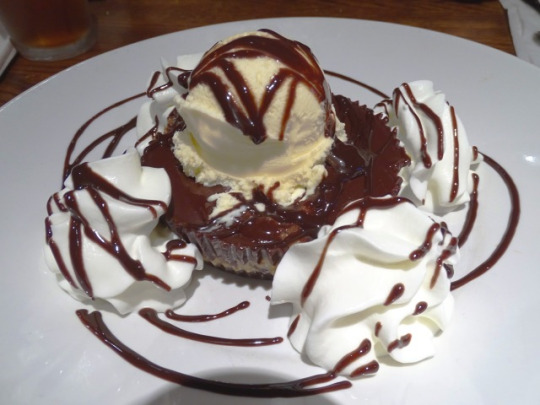


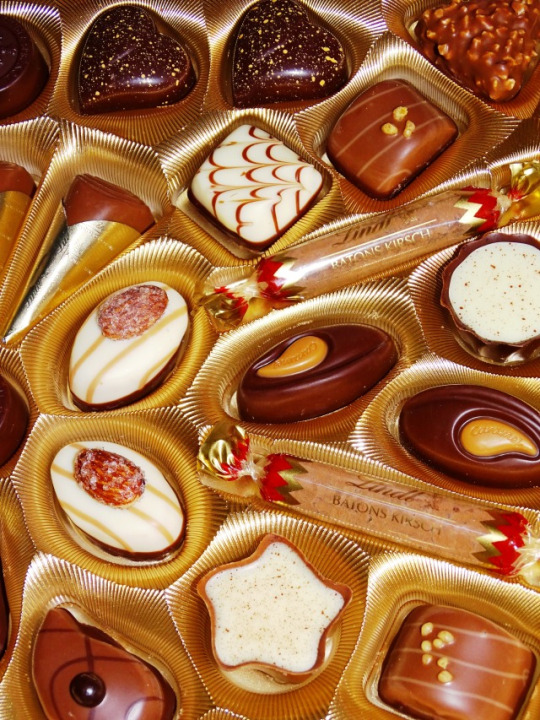


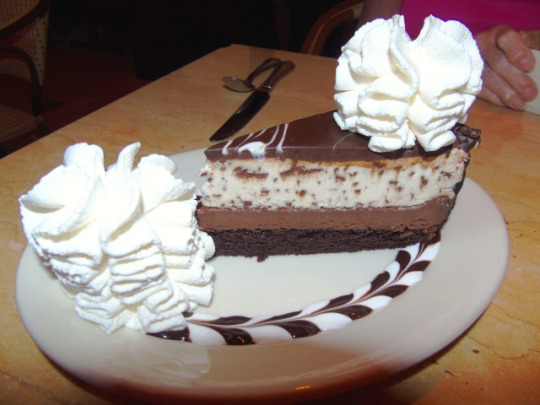


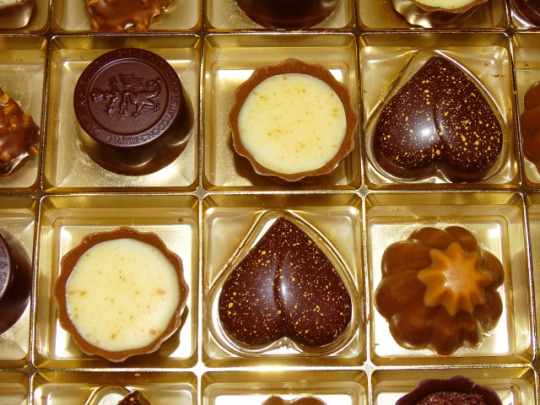
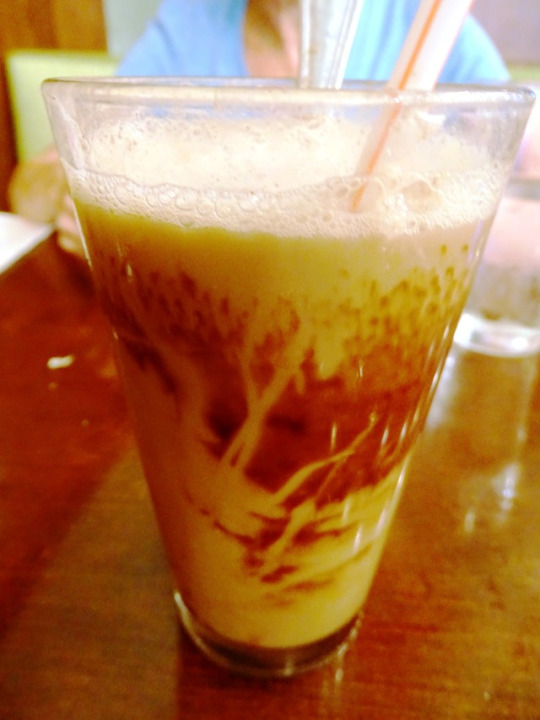




National Chocolate Day
With so many different varieties of this delicious treat, it can be so hard to pick a favorite. What will you choose to indulge your sweet tooth?
A food that encourages passion, many people would consider chocolate to be a gift to the world. Whether eaten in the form of a chocolate bar, enjoyed as a chocolate beverage or used to bake a variety of desserts, chocolate has a rich history and a bright future!
History of National Chocolate Day
Dating back more than 2000 years, chocolate seems to have originated in the Amazon where the cacao beans are made into a bitter-ish drink. Ancient Mayans and Olmecs of southern Mexico, as well as Aztecs were so enamored by the chocolate drink that some said that it must have come from the gods! Which is why it was likely used as a ceremonial drink at the time.
The name of the tree that produces the beans for making chocolate is Theobroma Cacao which, when translated, means “food of the gods”. It was named by taxonomist Carolus Linneaus who likely named it after the fact that Aztecs considered chocolate to have been something that was given by the gods.
By the time chocolate was discovered by Westerners in the New World and then made its way to Europe in the 1500s, it was something that was reserved for the wealthy and upper classes. It was not only enjoyed by them for taste reasons, but it had been discovered that the cocoa beans also had some health benefits!
Sugar was eventually added to the concoction and, as the product evolved over the next couple of centuries, it went from being only something that was made into a beverage but was developed into the eating chocolate that people enjoy today.
In the 19th century, along with the development of the industrial revolution, new processes came about that offered the opportunity to produce chocolate on a more regular basis. Of course, chocolate companies began cropping up in England, Europe and the United States. Fry & Sons created the world’s first chocolate bar in 1847.
Today, chocolate continues to be a huge industry, with cocoa beans grown in warm climates and exported to chocolate manufacturers all over the globe. Whether it’s the Hershey’s chocolate company in Pennsylvania, the Lindt company in Switzerland, or a smaller local chocolate company, it’s fun to enjoy access to this delicious treat.
Now it’s time to celebrate National Chocolate Day!
National Chocolate Day Timeline
2000 BC
Mayans enjoy chocolate
Even though it is used ritualistically as a drink, chocolate is not only saved for the wealthy and powerful but is likely enjoyed by common people.
13th Century AD
Aztecs revere chocolate
Taking the love of chocolate to the next level, Aztecs use cacao beans as a currency.
1609
First book devoted to chocolate
As the love for chocolate increases in Europe, a book is published in Mexico that is dedicated entirely to chocolate, “Libro en el cual se trata del chocolate”.
1765
First chocolate factory in the US
Dr. James Baker and John Hannon start a chocolate factory in Massachusetts.
1876
Milk Chocolate is created
Before this time, chocolate was only dark but when a Swiss chocolatier adds powdered milk to the chocolate process, things change drastically.
How to Celebrate National Chocolate Day
National Chocolate Day offers tons of different opportunities to get involved with celebrating and enjoying the day! Consider trying out some of these fun and delicious ideas:
Take a Tour for National Chocolate Day
Have tons of fun learning all about how chocolate is made and, hopefully, get to take home some samples! Take a tour of a chocolate company like Hershey’s Chocolate World in Hershey, Pennsylvania. Or enjoy the Lindt Home of Chocolate located in Zurich, Switzerland.
Or one great place to learn a lot about the chocolate industry would be at The Institute of Culinary Education in New York City. With the country’s first educational bean-to-bar chocolate lab, the institute offers classes that teach all about the creative process of chocolate.
Learn Some Bits of Trivia About Chocolate
What could be a better day than National Chocolate Day to brush up on some fun facts related to chocolate? Plus, this would also be the perfect day to share a few bits of chocolate trivia with friends, in honor of the day! Get started with some of these facts:
One pound of chocolate requires 400 cocoa beans and each tree produces approximately 2500 beans, so one tree can make about 6 pounds of chocolate.
Cacao trees are very delicate and farmers typically count on losing up to 30% of their crop each year, so being a chocolate farmer is a volatile business!
Although cocoa beans seem to have originated in the New World, the most cocoa farms, around 70% of those in the world, are located in West Africa, with Cote d’Ivoire as the single largest producer of cocoa.
It takes approximately 4-5 years for a newly planted cacao tree to actually produce fruit, so it requires a great deal of patience from the chocolate farmers.
Share Chocolate with Friends
Any day worth celebrating is worth enjoying and sharing with friends! National Chocolate Day is a great time to pick up a variety of chocolates and make plans to share them. Choose some chocolate bars to pass around to coworkers at the office, or grab a box of chocolates to share with the family at home.
Got a big chocolate lover in your life? Perhaps send them a gift of chocolate in honor of this day. It’s easy to use this opportunity as an excuse to give a gift!
Try Chocolate in Some New Recipes
Though many people only think of chocolate as something that should be enjoyed as a sweet dessert, there are plenty of delicious recipes out there that include chocolate as part of the flavors of a savory dish.
Perhaps, in honor of National Chocolate Day, it would be fun to try adding a bit of chocolate to every meal of the day! Here are some ideas for savory chocolate dishes to get started with:
Cocoa Rubbed Baby Back Ribs. Create a rub for ribs that includes warm spices such as cinnamon, ginger, and allspice, complemented with flavors of mustard and cocoa powder blended together.
Chocolate Beef and Bean Chili. Chocolate has often been used as an ingredient in certain types of chili, and this one is super delicious as it is made with a chocolate stout beer, providing a unique flavor.
Gascon-Style Beef Stew with Chocolate. This hearty, French-style stew offers the delicious flavors of chocolate, Armagnac, and Madiran wine – or Pinot Noir for a lighter version of the stew.
Chicken with Poblano Mole Sauce. This most iconic mole sauce from Mexico offers flavors like ancho, pasilla and mulato chiles, along with warm spices and, of course, velvety smooth chocolate.
National Chocolate Day FAQs
Can chocolate go bad?
Though some chocolate does not have a use by date, it can start to get chalky or cracked on the surface and may not taste as good as when it was first made.
What is white chocolate?
White chocolate can be made from the cocoa butter but does not necessarily contain the cacao nibs.
Did chocolate come from the new world?
Yes, the first evidence of chocolate consumption seems to come from the Aztec and Mayan cultures in what is modern-day Mexico.
Did chocolate used to be expensive?
When it came to Europe in the 1500s, chocolate was an import that was only enjoyed among the wealthy and elite.
Is chocolate poisonous to cats?
Yes, just like dogs, cats should not eat chocolate because it contains theobromine, which can be toxic to pets.
Source
#apricot tarte with white chocolate mousse#Banana Chocolate Mousse#eclair with Raspberry and Pistacio#chocolate cream pie#Peach Pie#White Chocolate Pistacio Cookie#cookie skillet#Chocolat Frey#Lindt & Sprüngli#Lindt Truffles#praline#truffes#food#Swiss chocolate is the best#original photography#National Chocolate Day#USA#NationalChocolateDay#28 October#travel#summer vacation#Canada#30th Anniversary Chocolate Cake Cheesecake#Death by Chocolate Pudding Cake#Chocolate Tuxedo Cream Cheesecake#Chocolate Peanut Butter Cup a la Mode#Chocolate Banana Shake#I only eat Swiss Chocolate#Chiapaneco Mole Chicken Enchiladas#Chocolate Caramelicious Cheesecake
4 notes
·
View notes
Text
Interesting facts about cocoa powder
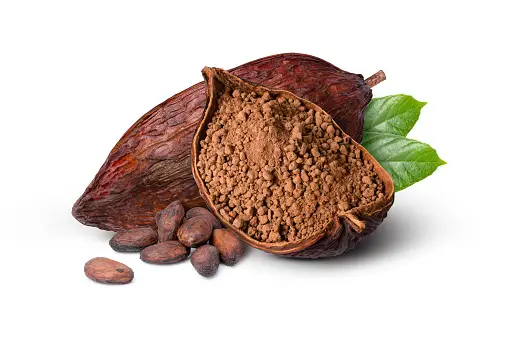
Here are some interesting facts about cocoa powder:
Origin: Cocoa powder is made from cacao beans, which come from the pods of the cacao tree (Theobroma cacao). The beans are fermented, dried, roasted, and then ground to produce cocoa powder.
Types: There are two main types of cocoa powder: natural and Dutch-processed. Natural cocoa powder is acidic and has a strong chocolate flavor, while Dutch-processed cocoa powder has been treated with an alkalizing agent to neutralize its acidity, resulting in a milder flavor and darker color.
Cacao Content: Cocoa powder is rich in flavonoids, which are compounds with antioxidant properties. These flavonoids can contribute to heart health by improving blood flow and reducing blood pressure.
Bitterness: Raw cocoa powder can be quite bitter due to the presence of certain compounds. This bitterness is often balanced out with sugar or other sweeteners in recipes.
Nutritional Value: Cocoa powder is low in fat and calories compared to chocolate bars. It’s also a good source of fiber, iron, and magnesium.
Caffeine: Cocoa powder contains caffeine, although less than coffee or tea. The amount of caffeine can vary depending on the type of cocoa powder and how it’s processed.
Uses: Cocoa powder is versatile and used in a wide range of recipes, from baked goods like cakes and cookies to beverages like hot chocolate and smoothies.
Historical Significance: The use of cacao dates back to ancient civilizations in Mesoamerica, including the Maya and Aztecs, who consumed a bitter chocolate drink made from cacao beans.
Health Benefits: Some studies suggest that the antioxidants in cocoa powder may help improve brain function, reduce inflammation, and support cardiovascular health.
Storage: To maintain its quality, cocoa powder should be stored in an airtight container in a cool, dry place. It can last for several months to a year, but its flavor and potency may diminish over time.
Wanna discover more about cocoa powder? Here is the high quality cocoa powder available in the market. You can also get a bulk supply of the product.
3 notes
·
View notes
Text

Savor the mouthwatering flavors of this Paleo Banana Mocha Shake, which is the ideal combination of almond butter, coffee, cocoa, and ripe bananas. For anyone on a Paleo diet or just searching for a tasty and stimulating drink, this dairy-free, paleo-friendly shake is a delightful treat.
Ingredients: 2 ripe bananas. 1 cup unsweetened almond milk. 2 tablespoons unsweetened cocoa powder. 1 tablespoon ground coffee brewed and cooled. 1 tablespoon almond butter. 1 teaspoon honey optional. Ice cubes. Cacao nibs and sliced bananas for garnish.
Instructions: Cut and remove the ripe banana skins. Put the sliced bananas into a blender. To the blender, add almond milk, unsweetened cocoa powder, ground coffee that has been brewed and cooled, almond butter, and honey, if preferred. For a thicker consistency, add a few ice cubes. Blend until the shake is smooth and creamy and all the ingredients are well combined. Pour the Paleo Banana Mocha Shake into glasses. Add sliced bananas and cacao nibs as garnish. Enjoy and serve right away!
Prep Time: 5 minutes
Cook Time: 0 minutes
Three Oak Violets
0 notes
Text
Why Cacao is a Superfood You Need for Better Health and Wellness
When you think of cacao, your mind might immediately go to chocolate – and for good reason! Cacao is the primary ingredient in chocolate, but it’s so much more than just the sweet treat you enjoy on special occasions. Cacao is a powerful superfood with numerous health benefits that can improve your overall well-being. In this blog, we’ll explore what cacao is, the benefits it offers, and how you can incorporate it into your diet.
What is Cacao?
Cacao is a plant that grows in tropical climates and is scientifically known as Theobroma cacao. The word “Theobroma” comes from Greek, meaning "food of the gods," which gives you a hint about how revered cacao is. The cacao plant produces cacao beans, which are harvested, fermented, and dried to create cacao powder and cacao nibs. These products are then used in various forms, from raw cacao powder to dark chocolate, and even in health supplements.
Cacao is often confused with cocoa, but the two are not the same. Cocoa is cacao that has been processed at high temperatures, which can remove some of its beneficial properties. Cacao, on the other hand, is typically raw or minimally processed, which helps it retain its natural nutrients and antioxidants.
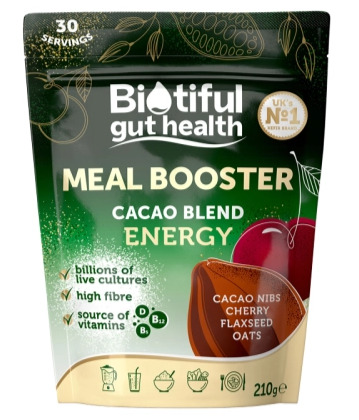
The Health Benefits of Cacao
Cacao is packed with essential nutrients that can support your health in a variety of ways. Here are some of the key health benefits of cacao:
1. Rich in Antioxidants
One of the most important benefits of cacao is its high antioxidant content. Cacao is loaded with flavonoids, a type of antioxidant that can help neutralise harmful free radicals in the body. Free radicals are unstable molecules that can cause cell damage and contribute to ageing and diseases like cancer and heart disease. By consuming cacao, you can boost your body's ability to fight oxidative stress and protect your cells.
2. Boosts Heart Health
Studies have shown that cacao can help improve heart health in several ways. The flavonoids in cacao help relax blood vessels, which can lower blood pressure. Cacao also helps to increase the flow of blood to the heart and brain, improving circulation. Moreover, the antioxidants in cacao can help reduce inflammation, which is a major risk factor for cardiovascular disease. Consuming cacao in moderation may contribute to better heart health, making it a great addition to a heart-healthy diet.
3. Improves Mood and Reduces Stress
Cacao is known to be a natural mood booster. It contains compounds that can help increase the production of endorphins, also known as the “feel-good” hormones. Cacao also contains a small amount of caffeine, which can provide a mild energy boost. Additionally, cacao contains magnesium, a mineral that is known to help reduce stress and promote relaxation. The combination of these mood-enhancing properties makes cacao a great choice when you're looking for a little pick-me-up.
4. Supports Brain Function
Cacao is not only good for your heart, but it can also benefit your brain. The flavonoids in cacao have been shown to improve brain function and may help protect against neurodegenerative diseases like Alzheimer's and Parkinson's. By increasing blood flow to the brain, cacao can enhance memory, cognitive function, and overall mental clarity. So, next time you need to focus, a small serving of cacao might help give your brain the boost it needs.
5. Rich in Nutrients
Cacao is a nutritional powerhouse, providing a wide range of essential vitamins and minerals. It is a great source of magnesium, iron, potassium, and zinc, all of which are important for maintaining a healthy body. Magnesium, in particular, is essential for muscle function, energy production, and maintaining healthy bones. Iron is crucial for transporting oxygen in the blood, while potassium helps regulate fluid balance and support proper heart function.
6. Supports Weight Management
While cacao is often associated with indulgent treats, it can actually support weight management when consumed in moderation. Cacao contains compounds that can help control appetite by regulating hunger hormones. Additionally, the fibre content in cacao helps promote satiety, keeping you feeling full for longer periods. This can help prevent overeating and reduce cravings. As part of a balanced diet, cacao may even support weight loss efforts by helping you manage your food intake.
7. Promotes Healthy Skin
Cacao is not just good for your internal health – it can also benefit your skin. The antioxidants in cacao help protect the skin from environmental stressors, such as pollution and UV rays, which can cause premature ageing. Cacao also helps improve skin hydration, making it a great addition to your skincare routine. In fact, many skincare products contain cacao as a key ingredient due to its ability to nourish and protect the skin.
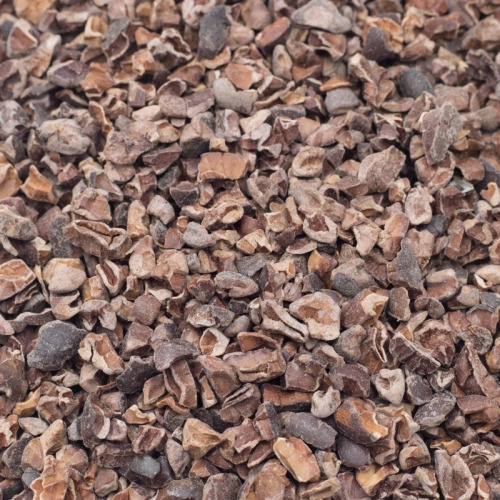
How to Incorporate Cacao into Your Diet
Now that you know about the many health benefits of cacao, you may be wondering how to incorporate it into your diet. Fortunately, there are many delicious ways to enjoy this superfood. Here are a few ideas:
1. Smoothies
Adding cacao powder to your smoothies is an easy and delicious way to enjoy its health benefits. Simply blend a tablespoon of raw cacao powder with your favourite fruits, greens, and a liquid base (such as almond milk or coconut water) for a nutritious, energy-boosting drink. You can even add other superfoods like chia seeds or spirulina for an extra health boost.
2. Baking
Cacao powder can be used as a substitute for cocoa powder in your favourite baking recipes. Whether you're making brownies, cookies, or cakes, swapping out regular cocoa powder for raw cacao can give your treats a healthier twist. Just remember that cacao has a more intense flavour than cocoa, so you may want to use a little less to avoid overpowering the taste.
3. Hot Chocolate
If you're a fan of hot chocolate, why not make your own using cacao? Simply heat up your milk of choice (dairy or non-dairy) and stir in a tablespoon of raw cacao powder. Add a little sweetener like honey or maple syrup, and you’ve got yourself a rich, comforting beverage packed with health benefits.
4. Energy Balls
Energy balls are a great way to enjoy cacao in a convenient, bite-sized form. Mix cacao powder with oats, nut butter, chia seeds, and a natural sweetener like dates or maple syrup. Roll the mixture into small balls, and you’ve got a healthy snack that’s perfect for on-the-go.
5. Cacao Nibs
Cacao nibs are small, crunchy pieces of cacao that can be sprinkled on top of your favourite foods. They’re perfect for adding texture and a bit of chocolatey flavour to smoothies, yogurt, oatmeal, or even salads. Cacao nibs are minimally processed and contain all the health benefits of raw cacao, making them a great addition to any diet.
6. Cacao in Protein Shakes
If you're looking for a way to enhance your protein shake, cacao is the perfect addition. Mix a scoop of protein powder with cacao powder for a delicious chocolate-flavoured shake that’s packed with nutrients and antioxidants.
Conclusion
Cacao is truly a superfood that deserves a spot in your diet. Whether you enjoy it in smoothies, baking, or as a simple hot chocolate, cacao offers a wealth of health benefits that can support your heart, brain, skin, and overall well-being. So, the next time you’re looking to treat yourself to something sweet, consider choosing raw cacao for a healthier alternative. By incorporating this powerful superfood into your daily routine, you can enjoy the many benefits it has to offer. At Grape Tree, we offer high-quality cacao products to help you unlock the full potential of this amazing superfood.
0 notes
Text
7 Mushroom Coffee for Athletes: Enhance Performance and Recovery
Athletes at every level look for small edges that add up to big wins. Swapping a regular cup of joe for mushroom-infused coffee is one of those edges. The right blend delivers smooth energy, sharper focus, and faster recovery, all without the jittery crash. Below are seven standout mushroom coffees that help you train harder and bounce back quicker. We’ll also cover the science behind the key fungi so you know exactly why each sip counts.
What makes mushroom coffee a game-changer for athletes?
Mushrooms like cordyceps, lion’s mane, and chaga contain bioactive compounds that support oxygen uptake, cognitive function, and immune defense. When paired with coffee’s natural caffeine, they create a balanced boost that keeps performance high while taming inflammation post-workout.
1. Grateful Earth Coffee Super Brain Blend
Grateful Earth Coffee’s flagship mix combines lion’s mane for mental clarity, cordyceps for endurance, and a touch of reishi to calm post-training stress. Medium-dark roast beans give it a rich body athletes love, and each serving supplies B-vitamins from spirulina for extra metabolic support. Why athletes like it
Smooth lift without spikes in heart rate
Adaptogens help regulate cortisol after intense sessions
No added sugars or artificial flavors
How does cordyceps improve endurance?
Cordyceps may raise cellular ATP production, which can translate to better oxygen utilization during long runs or rides. Studies show it can modestly increase VO₂ max, making it a favorite among endurance athletes.
2. RYZE Mushroom Coffee
RYZE blends six functional mushrooms — cordyceps, lion’s mane, chaga, reishi, shiitake, and king trumpet — into organic Arabica coffee. The result is a creamy brew athletes often rank among the best tasting mushroom coffee options thanks to its subtle earthy sweetness. Performance perks
Cordyceps and king trumpet support stamina
Beta-glucans in shiitake aid immune resilience during heavy training blocks
MCT oil powder adds sustained fuel
3. Four Sigmatic Performance Ground Coffee
This brand boosts its 100 percent Arabica base with cordyceps and lion’s mane, then adds ground chaga for powerful antioxidants. It brews like a classic drip, making it easy to slot into any morning routine. Why it stands out
Certified organic and tested for heavy metals
Chaga counters oxidative stress from high-intensity workouts
Subtle caramel notes please traditional coffee fans
Which mushroom supports faster muscle recovery?
Reishi’s triterpenes appear to modulate the body’s inflammatory response, potentially reducing post-exercise soreness. That can mean feeling fresher for the next training session.
4. MudWtr Rise Cocoa Blend
If you’re cutting caffeine, MudWtr supplies just 35 mg per cup. Lion’s mane sharpens focus during skill drills, while turkey tail offers prebiotic fiber for gut health, a growing priority for many athletes. Highlights
Organic cacao delivers magnesium for muscle relaxation
Ginger and cinnamon add natural warmth and flavor
Contains no added sweeteners
5. Laird Superfood Functional Mushroom Coffee
Created by surfer Laird Hamilton, this instant blend features cordyceps, chaga, and lion’s mane. It dissolves quickly in hot or cold water, perfect for race-day travel. Athlete advantages
Polysaccharides from chaga reinforce immune health during taper weeks
Freeze-dried coffee retains bold taste
Gluten-free and vegan friendly
6. Everyday Dose Mushroom Latte Mix
Everyday Dose pairs lion’s mane with collagen peptides and L-theanine, producing calm alertness and joint-friendly amino acids. Many users report fewer stomach issues compared with traditional espresso. Key benefits
Collagen supports connective tissue resilience
Lion’s mane stimulates nerve growth factor for motor learning
Only 39 calories per serving
Can chaga help fight training fatigue?
Often dubbed the “king of mushrooms,” chaga is rich in antioxidants that neutralize free radicals generated during strenuous exercise. That antioxidant load may lessen fatigue and speed up cellular repair.
7. Om Mushroom Mocha Blend
Om’s instant mocha pairs fair-trade coffee with reishi, cordyceps, lion’s mane, and chaga mushroom coffee extract. A hint of organic cocoa makes it a crowd-pleaser in recovery shakes. Why it rounds out our list
Dual-extracted mushrooms for higher bioavailability
Reishi promotes restful sleep, crucial for muscle growth
Dairy-free and keto friendly
How to choose the right mushroom coffee for your sport?
Match your goal
Need stamina? Look for cordyceps.
Crave focus for precision drills? Lion’s mane is your ally.
Prioritize recovery? Reishi or chaga can help.
Check caffeine content Endurance athletes may tolerate higher caffeine, while late-day lifters might prefer low-caffeine blends.
Review ingredient transparency Opt for brands that disclose mushroom fruiting-body percentages and third-party testing.
Brewing tips for peak benefits
Use hot but not boiling water (about 195 °F) to preserve delicate compounds.
Stir in healthy fats like almond milk or MCT oil for longer-lasting energy.
Time it right. Sip 30 minutes before training for a performance lift, or within an hour after to kick-start recovery.
Final Thoughts
Mushroom coffee isn’t just a trend. It’s a smart swap that supports endurance, focus, and regeneration in a single cup. Whether you reach for the smooth notes of RYZE or the antioxidant punch of chaga-rich Om, each blend offers a unique edge. Grateful Earth Coffee leads the pack when you want brainpower and balanced energy without compromise. Explore these seven options, find your favorite, and brew a better path to personal bests.
Grateful Earth Coffee invites you to elevate your routine, honor your body, and savor every stride, stroke, or spin that follows. Cheers to stronger workouts, and even stronger recoveries.
#MushroomCoffee#AdaptogenCoffee#AthleteFuel#FitnessFuel#PerformanceBoost#RecoveryFuel#CordycepsCoffee#LionsManeCoffee#GymFuel#EnduranceBoost#NoJitters#NaturalEnergy#WorkoutRecovery#FunctionalMushrooms#MindBodyFuel#TrainingFuel#SustainableCoffee#CleanEnergy#AthleteRecovery#PreWorkoutBoost
0 notes
Text

#cocoa is a powder made from ground and roasted cacao beans, which are the seeds of the Theobroma cacao tree. It's a key ing
0 notes
Text










SELEUSS - L'AMORE DI UN PAGLIACCI
BATCH#: 1576, 1574, 1577
L'AMORE DI UN PAGLIACCI!
The best kind of Love is the Love from a Clown! ;)
PLEASE CONTACT YOUR FRIEND (CLOWN) FOR MORE INFO!
One of our most popular chocolates and named after the 1948 Italian film PAGLIACCI, which is based on Ruggero Leoncavallo’s opera premiere in 1892. The movie was directed by Mario Costa and stars Tito Gobbi and Gina Lollobrigida, it tells the story of a commedia dell’arte troupe as they enter a new town and the love intrigue that follows. A delicious Italian style candy enrobed in a smooth 71% MORETTA™ Dark Chocolate and sprinkled with either Honey Crystals or Golden Pailletés Fines.
L’AMORE DI UN PAGLIACCI INGREDIENTS: Chocolate (Cacao Beans, Cacao Butter, Sugar, Sunflower & soy Lecithin, Vanilla), hard CANDY (DEXTROSE, LESS THAN 2 PERCENT OF CORN SYRUP, MALIC ACID, SUGAR, TITANIUM DIOXIDE, YELLOW 6 LAKE, RED 40 LAKE, BLUE 1 LAKE, YELLOW 5 LAKE, YELLOW 6, NATURAL AND ARTIFICIAL FLAVOR, CALCIUM STEARATE, CARNAUBA WAX, HONEY CRYSTAL (SUGAR, HONEY), GOLDEN PAILLETÉS FINS (SUGAR, UNSWEETENED CHOCOLATE, COCOA BUTTER, WHOLE MILK POWDER, MILKFAT, NATURAL VANILLA FLAVOR, MICA-BASED PEARLESCENT, IRON DIOXIDE), CONTAINS: SOY, jaw breaker candy from your friend. THIS PRODUCT IS PROCESSED IN A FACILITY THAT CONTAINS MILK, EGGS, WHEAT, HAZELNUTS, ALMONDS, PEANUTS AND OTHER NUTS. INGREDIENTS FROM: USA, italy, Belgium, ecuador, peru.






#seleuss#seleusschocolates#seleusspagliacci#pagliacci#opera#pagliaccimovie#pagliacciopesel#ruggero#ruggeroleoncavallo#mariocosta#titogobbi#gina lollobrigida#tito gobbi#mario costa#amore#chocolateamore#amore chocolate#april fools#aprilfools#seleussaprilfools#jawbreaker#nutic#nuticjawbreakers#psychedlic#psychedelic jawbreakers
0 notes
Text
Chocolate is derived from cacao seeds of the Theobroma cacao tree. The production process involves harvesting, roasting, drying, and grinding cacao beans to create a paste. This paste is then processed to separate chocolate liquor and cocoa cream, which are combined in varying proportions to produce different chocolate types, including dark, milk, white, and baking chocolates, as well as cocoa powder.
0 notes